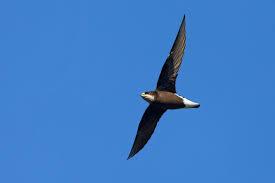Exploring the White Throated Needletail

Introduction
The white throated needletail (Hirundapus caudacutus) is a fascinating bird that has garnered the attention of ornithologists and bird enthusiasts alike. Known for its exceptional flying abilities and unique characteristics, this species holds an important role in the ecosystem as a master of aerial foraging. Its presence and behaviour can provide insights into the overall health of the environments it inhabits, making it a significant subject for study.
Overview of the White Throated Needletail
Measuring around 20-22 cm in length, the white throated needletail is a member of the swift family, distinguished by its long wings and a distinctive white throat that contrasts with its dark plumage. These birds are renowned for their speed and agility, being capable of reaching flying speeds of up to 170 km/h. They primarily inhabit forests and open areas across parts of Asia and Australasia, migrating seasonally to warmer regions in search of insects, their main source of food.
Behaviour and Nesting
One of the most intriguing aspects of the white throated needletail is its nesting behaviour. Unlike many bird species that build nests on the ground or in trees, this swift typically lays its eggs in existing nests of larger birds, such as those of tree creepers. This unique adaptation not only provides protection from predators but also showcases the bird’s remarkable aerial prowess, as it can effortlessly glide and swoop into tight spaces to deposit its eggs.
Current Status and Conservation
As of now, the International Union for Conservation of Nature (IUCN) assesses the white throated needletail as a species of ‘Least Concern,’ indicating that it currently does not face significant threats. However, habitat loss due to deforestation and climate change could impact its future, highlighting the importance of conservation efforts. Ornithologists encourage continued research and monitoring of this species to ensure its populations remain stable.
Conclusion
The white throated needletail is not just a bird of remarkable beauty and speed; it also serves as a crucial indicator of the ecological balance within its habitat. For birdwatchers and nature lovers, spotting this swift in the wild can be a thrilling experience, helping to foster a deeper appreciation for avian diversity. Ongoing conservation measures will be essential to safeguard the future of this extraordinary species and ensure that it continues to grace our skies.
